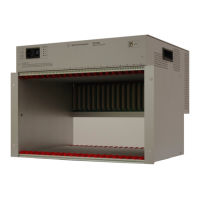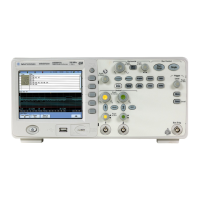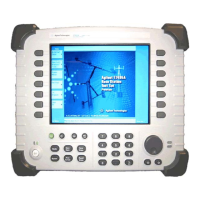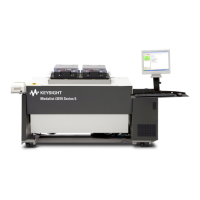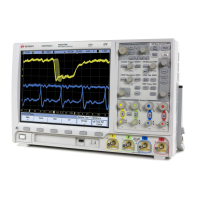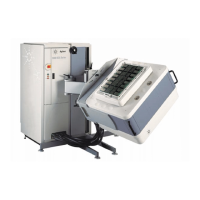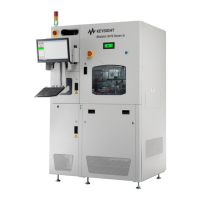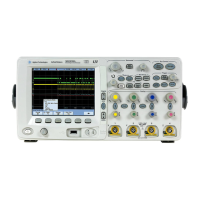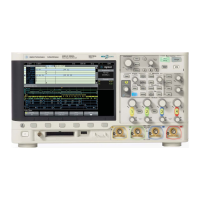3 Using the Scope Functions
46 Agilent U1602B/U1604B User’s and Service Guide
• Slope
Press F3 on page 1/2 to select rising edge or falling edge .
The selected slope is displayed at the trigger status line at the right
of the display.
•Coupling
Press F2 on page 2/2 to select trigger coupling:
• DC coupling allows DC and AC signals to pass through the trigger
path.
• AC coupling allows AC signals to pass through the trigger path
and filter DC offset voltage from the trigger waveform. The
coupling cutoff frequency is less than 1 Hz. The AC coupling is
useful to get a stable edge trigger when the waveform has a large
DC offset.
• HF Rejection coupling places a 50 kHz low- pass filter in the
trigger path to remove high frequency components from the trigger
waveform. The HF- Rej is useful to observe low frequency signals
while getting rid of high frequency noise from trigger path.
• LF Rejection coupling places a 30 kHz high- pass filter in series
with the trigger waveform to remove any unwanted low frequency
components from the trigger waveform. This LF- Rej is useful to
obtain a stable edge trigger when your waveform contains low
frequency noise.
• Noise Rejection coupling is three times the DC coupled limits. The
Noise- Rej provides additional hysteresis to the trigger circuitry.
• Level
Press F3 on page 2/2 to select the types of trigger level adjustment.
• Manual trigger level allows you to change the trigger level by
turning the rotary switch. The value of the trigger level is
displayed under the Level column.
• TTL trigger level sets the trigger level to recognize the High/Low
condition in a TTL signal automatically.
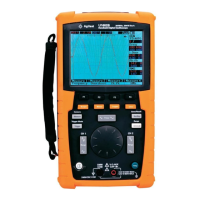
